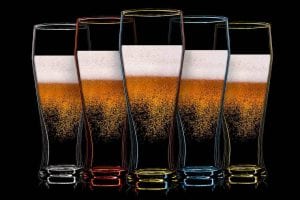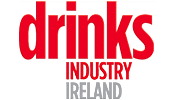Reopening hospitality 2021 – key trends & implications

Some new habits formed by consumers during Lockdown have implications for the drinks industry and will have to be tackled. So believes Cian O’Mahony, Category Development Manager at Diageo Ireland.
Cian’s work involves him getting an understanding of market trends, consumers and occasions to help grow the alcohol category.
Some of the research and insights he’s gathered should also help those in hospitality better understand what happened last year and what may be in store this year so that they can ensure that their business emerges stronger as a result.
He recently provided some 20 on-trade customers with the following observations over Zoom.
Reopening: key 2020 trends
Empathy research figures indicate strong growth in retail ‘treating’ categories such as chocolates last year.
“In the on-trade, cocktails saw big spikes in the late Summer months,” says Cian.
Online grocery boomed too, with concerns about safety leading to a doubling from one-in-five to two-in-five in the number of consumers purchasing online.
Furthermore, Amárach Research found that one in three Irish alcohol shoppers now expect to do most if not all of their alcohol shopping online in future.
Treating and premiumisation
Treating/premiumisation is both a key trend and a big opportunity.
Google searches often include “the best” or “the top of range”.
Nearly one in four UK consumers used their trip out to the on-trade as a ‘treat’ or ‘reward’ in 2020 according to CGA.
Research for its Tiers, Fears and the Road to Recovery report found that 53% of UK consumers treated themselves more on each occasion, with 44% spending more on eating/drinking in that venue.
Irish Google searches for cocktails were up 15% in the 12 weeks to the 21st of February this year according to Kantar Worldpanel figures, while the top off-trade cocktails are the Espresso Martini, Negroni, Margarita and the Mojito according to cross-shop data from Dunnhumby in the UK.

Irish Google searches for cocktails were up 15% in the 12 weeks to the 21st of February this year according to Kantar Worldpanel figures.
Pubs serving food
Food & drink have always been linked but pubs serving food found themselves having to do so as a legal requirement during the pandemic in order to remain open. This linked food & drink ever more closely in consumers’ minds so that now over half of all alcohol occasions in Ireland are linked to food.
Midweek occasion on the rise
Another noticeable trend has been the rise of the midweek occasion.
Retail sales data show that consumers are no longer making that big weekly shop but spreading those purchasing occasions in supermarkets throughout the week.
And many publicans found that their midweek evenings were now as busy as their Friday or Saturday nights. However these occasions tended to be lower in tempo, involving smaller groups enjoying low-tempo meals out.
Health
Health is a long-term trend and it’s not for going away.
The advent of the health-conscious consumer has led to demand for lower alcohol & lower calorie drinks as well as vegan and vegetarian options on food menus.
“We’ve seen key shifts in ‘occasions’ across the on-trade since the beginning of the pandemic,” says Cian.
Trends surfacing include food-led outlets in the pandemic, ‘treating’ and ‘outdoor’ with lower tempo and smaller groups than before.
Key pivots
Global trends have indicated three key pivots.
The first has been outlets enabling consumers to enjoy their on-trade experiences at home via pre-made cocktails and home delivery systems for both food and drink.
The second has been a rise in outlets experiencing engagement with consumers digitally, bringing the on-trade experience to consumers via their phone. This has led to an increase in digital and social engagement whether it was weekly streamed cocktail classes from a pub or hosting digital pub quizzes.
Finally, some outlets conducted a full business pivot and changed completely how they operated. Some focused on hiring out their space to office workers, some became grocery stores and one became a fashionable Lisbon barber.
These changes are all aimed at maximising income and potentially learning about new income streams.
By pivoting their activities in these ways, the businesses keep themselves top of consumer mind and they maintain a conversation with their customers, possibly recruiting others for when the pubs reopen.
Right range
Nielsen RoI Off-Trade figures for February 2020 indicate that nearly 80% of all RoI draught beer sales came from the top five brands: Guinness, Heineken, Carlsberg, Coors Lite and Smithwick’s.
Stocking the right range will help increase beer sales and improve the consumer experience, believes Cian.
Popular brands should be clearly available to order (for example have branding on staff uniforms, on menus and/or on the chalkboard) and feature ‘trending’ brands too.
Staff
Nine out of 10 consumers will order a drink if recommended by a bartender while one in three engage with bar staff to facilitate decision-making or seek reassurance or inspiration.
So staff need to be trained up to have a good knowledge of brands and categories and to have the skills to make great drinks. But hospitality has suffered a “brain drain” with the industry losing staff to other employments as the sector moves out of Lockdown.
Quality + glassware
Eight out of 10 consumers will order another drink if the first is served correctly according to Diageo 365 Essentials’ research.
78% of consumers say that besides taste, presentation makes a drink perfect.
It’s essential therefore to ensure that your beer is fresh, that your lines are cleaned regularly and that your glassware is washed correctly.

It’s essential to ensure that your beer is fresh, that your lines are cleaned regularly and that your glassware is washed correctly.
Outdoor spaces
These have been the first to reopen in the on-trade so can any outdoor spaces be leveraged as a serving or dining space?
64% of consumers in China said they’re more confident visiting venues with large capacities and over 50% of UK consumers said they’ll continue to sit in outdoor spaces over the Winter if those open spaces are adapted sufficiently according to CGA.
Proprietors should re-purpose any relevant smoking areas/vacant spaces.
Return to work
Working From Home is not going to disappear. Three out of four UK business leaders said they saw WFH as a long-term significant trend going forward which will impact on the city centre’s share of sales.
Most people now WFH, but over 2021 people will return to working in city centres, so one’s outdoor space should be enabled for this cohort.
Only 30% of what had been the previous city centre workforce is expected to be in the city centre at any one time now according to Robert Walters Recruiters, so city centres will have a constantly updating audience with different consumers in on different days of the week.
This could be an opportunity for outlets to ensure that they’re capturing that workforce for midweek occasions.
This could also have positive implications for the post-work footfall for a drink and it could help broaden the day/night offer, making the outlet a true ‘chameleon’.
Such outlets should target offices/buildings to communicate their new offering and bear in mind that new consumers are looking to go out during the week more often.
Suburban vs Urban
Outlets based in the suburbs will have new opportunities too as many workers won’t be commuting daily so there will be new potential around those midweek occasions with 60% of people going out locally because “it’s convenient” according to Tiers, Fears and the Road to Recovery which also points out that UK analysts predict a 15% decrease in on-trade sales in city centres versus a 15-16% growth for small and large towns.
Here, two in five Irish workers are in no rush to return to the office according to the ESRI.
Sitting as that bridge between city centre and suburb could be a winning space for an outlet many of which, in the absence of any need for their potential customers to commute, should witness an increase in midweek occasions.
Food as a pivot
On-trade outlets pivoting into grocery stores/take-away are more common today as 55% of consumers look to shop local according to CGA.
While pivoting one’s business into a grocery store is not for everyone it could be valuable to examine how one can use the physical space outside standard opening hours.
Venues in the UK and Australia have found real success in pivoting to a premium local grocery store so outlets could begin by looking at “down time” and idle space to become a chameleon outlet, retailing outside the normal hours and outside the normal range of product.

Cian O’Mahony, Category Development Manager at Diageo Ireland.









